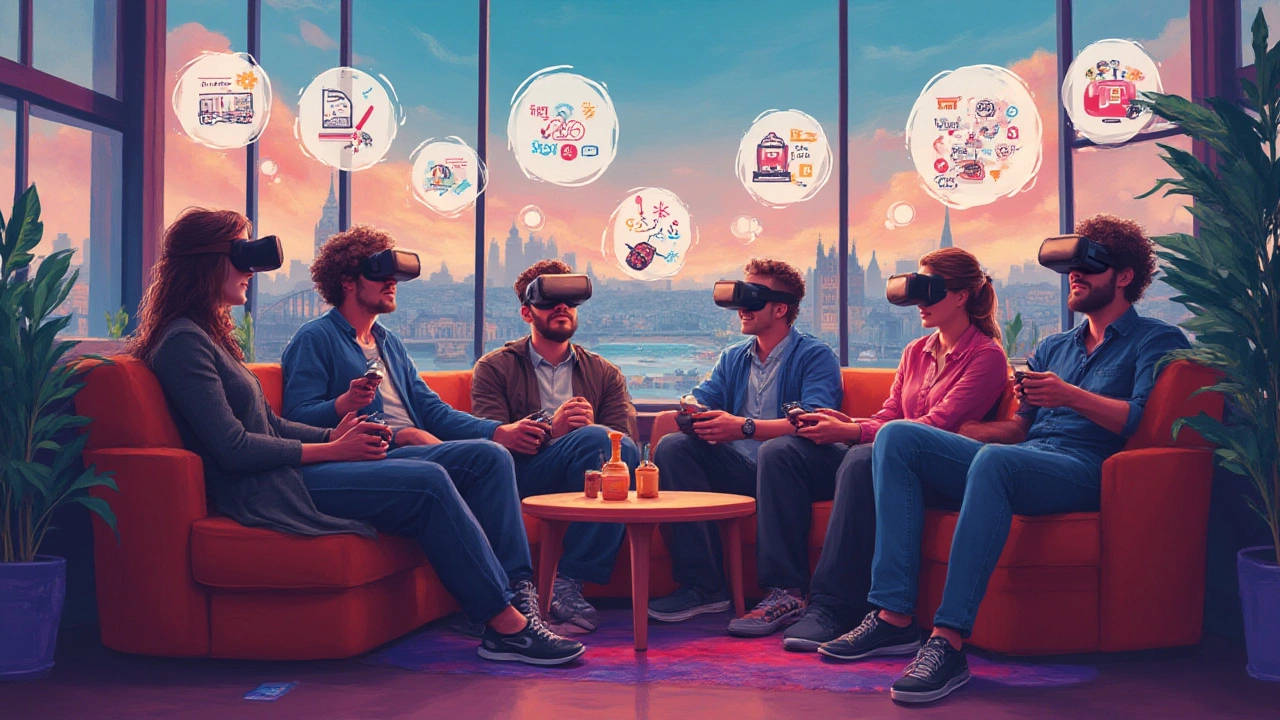Ever catch yourself feeling a little rusty behind the wheel after a long break? Or maybe you’re waiting to take your driving test and feel like you’re losing your edge. Here’s a curveball: what if you could actually get better at driving without setting foot inside a car? Sounds like a magic trick, right? But actually, it’s possible. Science backs it up, and a bunch of clever techniques can boost your driving chops—no keys required.
The Brain’s Gearbox: Mental Practice and Visualization
Your brain is the ultimate driving simulator, and it can be trained without a steering wheel in sight. Studies from places like the University of Chicago and the University of Montreal have shown that athletes, musicians, and yes, drivers, can boost their performance just by mentally rehearsing their skills. The act of visualizing each move, from checking your mirrors to taking sharp bends, lights up the same neural pathways that actual driving does. Olympics coaches do this, chess grandmasters swear by it, and it works for your morning commute, too.
Here’s how to put mental practice into high gear:
- Find a quiet spot and spend a few minutes imagining yourself driving. See yourself going through all the motions: starting the engine, adjusting mirrors, merging, stopping for traffic lights. Go for detail—picture the dashboard, the feel of the pedals, the sound of the turn indicator.
- Keep it real. Don’t only daydream about smooth driving. Imagine tricky situations, like parallel parking on a busy street or reacting when a cyclist suddenly appears. Your brain will treat those as real “drills.”
- Practice at different times of day. Traffic at 5pm is a whole other beast compared to a 7am sunrise drive. Get your mind ready for anything.
Think this is all just a fancy meditation? Research says consistent mental practice can improve reaction times and attention in real-world driving. After all, fighter pilots log hours in simulators before they even fly a plane. Why not do the same, in your brain?
Virtual Roads: Driving Simulators and Video Game Training
If you don’t trust your imagination to get you over the learning curve, technology has your back. Modern driving simulators (and even some video games) come remarkably close to real driving. The UK’s Transport Research Laboratory found that people who used simulators for hazard perception tests scored higher on real-world driving exams. These digital tools let you experience everything from snowstorms to slippery roundabouts—completely risk-free.
Want a list of options outside a pricey driving school setup? Check these out:
- Gran Turismo and Forza: Sure, there’s plenty of racing, but both games offer modes where you have to follow traffic rules, master car handling, and even deal with tire wear. Pay attention to braking points, turning, and speeding penalties; they mirror real-life lessons.
- City Car Driving: Used by actual driving instructors, this PC simulator throws you into busy city streets with real traffic rules, unpredictable pedestrians, and weather changes.
- VR Experiences: If you’ve got a virtual reality headset, apps like Driving School VR provide an even more immersive, hands-on environment, letting you practice checking mirrors, signaling, and reacting to sudden hazards.
Mix gaming with intention. Don’t just drift through Grand Theft Auto traffic lights—treat it as real practice and focus on following rules, anticipating danger, and staying calm under pressure. Better yet, test your hazard perception with online quizzes. They sharpen your awareness, which translates into safer driving.

Sneaky Skill Builders: Everyday Life Habits That Sharpen Driving Instincts
Turns out, what you do away from the wheel makes you a better driver than you’d think. Great driving is all about awareness, reaction, decision-making, and memory—skills you can strengthen every day. Want to supercharge your driving, even if your car is gathering dust? Here’s how:
- Play Reaction Games: Apps like Lumosity or old-fashioned fast-paced games (table tennis, anyone?) train your brain to process information and react in a flash. These skills directly transfer to noticing sudden obstacles or changes in traffic.
- Go for Walks or Bike Rides in Traffic: Pedestrian life isn’t just good for your health. When you walk or cycle, you start to see how bad drivers behave, notice how intersections really work, and learn how to anticipate movement around you. It’s insight you’ll carry when you’re back in the driver’s seat.
- Test Your Memory: Got a route you drive often? Try memorizing every road sign, landmark, or speed bump next time you ride along as a passenger. This powers up your spatial memory and attention to detail, both key for staying safe on the road.
- Try hand-eye coordination challenges. Juggling, video games that require fast clicks, or even simple ball tosses crank up reaction speed, which is crucial when you’re behind the wheel.
- Observe others. Be a “backseat driver” (silently!). Watch drivers handle merges, roundabouts, or parking nightmares. Mentally rate their choices—no need to speak up, but keep a mental note of what you’d do differently.
Don’t underestimate the power of rest, either. Lack of sleep slows reaction time and makes it hard to focus—both are big risks when driving. Even as a future driver, dial in your sleep schedule.
Knowledge is Horsepower: Sharpening Theory and Rules Without a Car
Driving isn’t all about steering and shifting gears; the best drivers know the rules backward and forward. Here’s your chance to outshine average drivers by mastering the theoretical side of the road before you hit the gas. Study after study, especially in Finland (where passing the driving theory test is notoriously tough), shows a direct link between strong theory skills and fewer accidents.
- Crack Open the Highway Code: It’s amazing how often people forget road signs, lane rules, or the right of way. Quizzes—like GOV.UK’s official ones—let you test yourself as much as you want.
- Follow road safety influencers or driving instructors on YouTube or TikTok. They break down real-world scenarios, explain tricky intersections, and debunk parking myths. Go for UK-based instructors to stay relevant if you’re local.
- Watch dashcam videos. Yes, they’re sometimes wild, but they’re also a goldmine for learning about split-second decisions, common blunders, and how to anticipate hazards ahead of time.
- Get a handle on car basics—online tutorials on what dashboard lights mean, checking tyre pressure, or what to do if your engine won’t start really add up. You’ll look like less of a newbie when you hop in next.
- Study real maps. Use Google Maps’ Street View to “drive” routes you take often. Plan your moves ahead of time, spot tricky junctions, and practice mentally navigating—especially if you’re learning to drive in a new city.
The more you know about what’s legal, what’s not, when to merge, and how to handle emergencies, the more relaxed and ready you’ll be when the time comes to actually drive.
So, you don’t need a car parked outside or the keys in hand to become a safer, sharper, and *better* driver. You can make those gains sitting on your couch, in your office chair, and yes, even in bed. Grab your phone, some headphones, and maybe a game controller—and get busy training that driving brain of yours. Next time you finally hit the road, you’ll already be ahead of the pack.

